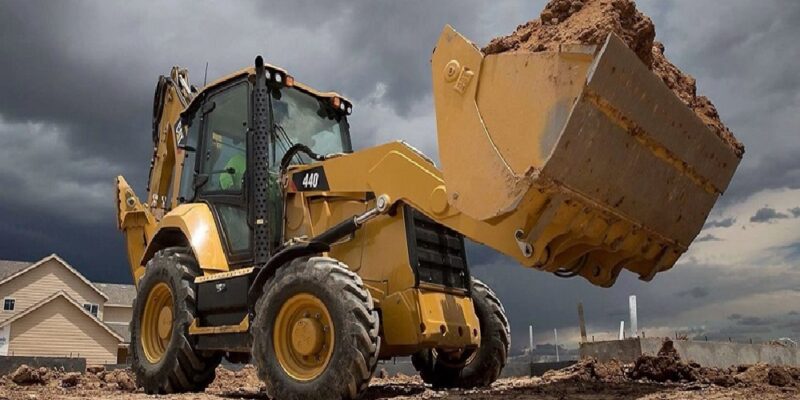Selecting the appropriate earthmoving equipment is crucial for the success of any construction project. Whether you’re working on a small residential site or a large commercial development, the right machinery can significantly enhance efficiency, productivity, and safety. This article will guide you through the essential considerations when choosing earthmoving equipment for your project.
Understanding Earthmoving Equipment
Earthmoving equipment encompasses a variety of machines designed to move large quantities of soil, rock, and other materials during construction. Common types of earthmoving equipment include excavators, bulldozers, backhoes, loaders, and scrapers. Each type serves a distinct purpose and is suited for specific tasks, making it essential to understand their functionalities.
Types of Earthmoving Equipment
- Excavators: These versatile machines are equipped with a boom, dipper, and bucket, allowing them to dig, lift, and move materials efficiently. Excavators are ideal for trenching, grading, and site preparation.
- Bulldozers: Known for their powerful blades, bulldozers are primarily used for pushing large amounts of soil and debris. They are perfect for grading and leveling surfaces, making them a staple in earthmoving operations.
- Backhoes: Combining the functionality of an excavator and a loader, backhoes are suitable for digging, lifting, and transporting materials. Their compact size makes them ideal for small to medium-sized projects.
- Loaders: These machines are designed for loading materials onto trucks or moving them around the site. Wheel loaders are often used for transporting bulk materials, while track loaders offer better traction on uneven terrain.
- Scrapers: Scrapers are utilized for moving and spreading large quantities of earth. They are particularly effective in grading and shaping surfaces, making them valuable in road construction and land development.
Assessing Your Project Requirements
Before selecting earthmoving equipment, it is crucial to assess your project requirements. Consider the following factors:
1. Project Size and Scope
The size and scope of your project will significantly influence the type and quantity of earthmoving equipment needed. Larger projects may require multiple machines to operate simultaneously, while smaller projects may only need a single piece of equipment.
2. Site Conditions
The conditions of your construction site play a vital role in equipment selection. Factors such as soil type, terrain, and accessibility can determine which machines are suitable. For instance, if the site is muddy or uneven, you may require equipment with better traction, such as track loaders or bulldozers.
3. Job Specifications
Understanding the specific tasks involved in your project is essential. For example, if your project involves deep excavation, an excavator would be the best choice. Conversely, if you need to move large quantities of material quickly, a bulldozer or loader may be more appropriate.
Evaluating Equipment Features
When choosing earthmoving equipment, evaluate the features that can enhance performance and efficiency:
1. Engine Power
The engine power of the equipment directly impacts its performance. Ensure that the machine you select has sufficient horsepower to handle the workload. More powerful machines can perform tasks more quickly and efficiently, which is crucial for meeting project deadlines.
2. Capacity
The capacity of the equipment, such as bucket size or lifting capability, should align with your project’s material handling requirements. Larger capacities allow for more efficient operation, reducing the number of trips needed to transport materials.
3. Versatility
Choosing versatile equipment can provide significant advantages. Machines that can perform multiple tasks, such as backhoes or skid-steer loaders, can save time and money by eliminating the need for additional machinery.
Considering Equipment Availability and Cost
Budget constraints and equipment availability are critical factors in your decision-making process:
1. Rental vs. Purchase
Decide whether it is more cost-effective to rent or purchase the earthmoving equipment. For short-term projects, renting may be the best option. However, for long-term projects, purchasing equipment could provide better value over time.
2. Operating Costs
Consider the operating costs associated with the equipment, including fuel consumption, maintenance, and repairs. Machines with lower operating costs can significantly impact your project budget.
3. Availability
Ensure that the equipment you need is readily available when you require it. Delays in equipment procurement can hinder your project timeline, so it’s essential to plan ahead and secure the necessary machinery.
Ensuring Safety and Compliance
Safety should always be a top priority when working with earthmoving equipment. Ensure that the equipment meets safety standards and regulations. Regular maintenance and inspections are vital to ensure safe operation and prevent accidents on the job site.
Conclusion
Choosing the right earthmoving equipment for your construction project requires careful consideration of various factors, including project size, site conditions, and equipment features. By assessing your project requirements and evaluating the available options, you can select the most suitable machinery to enhance efficiency and ensure successful project completion. Investing time in this selection process will ultimately lead to smoother operations and better outcomes for your construction endeavors.









Comments